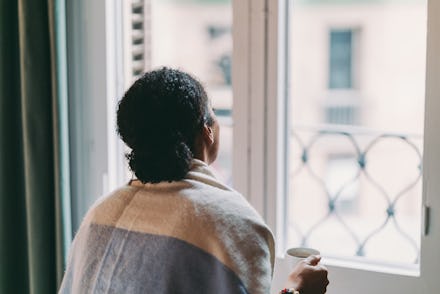Why the CDC wants to shorten the coronavirus isolation period

We, the people of the U.S., have basically failed at following restrictions aimed at containing the spread of coronavirus. You can blame the “I do what I want no matter who it kills,” attitude of many Americans or you can blame the fact that we have received confusing — and sometimes contradictory — guidance from *cough* leadership right from the jump. But this is a relatively new virus and scientists are still scrambling to understand what the best course of action to contain it is. In a recent turn of events, the Centers for Disease Control and Prevention (CDC ) is considering shortening the recommended COVID-19 isolation period following infection to five days from ten.
The CDC is reconsidering the quarantine period, in part, because of research published last week in medical journal The Lancet which suggests that people with COVID-19 are most infectious two days before they have symptoms and for five days after. The research looked at how long the virus can survive in those infected and what scientists found is that while the virus can live in different parts of a person’s body — like the lungs — for much longer and they can continue to test positive, they are not likely to be infectious
The reason that some non-infectious people may test positive is that some tests can detect genetic fragments of the virus, reported the New York Times. Those fragments of virus are not infectious. They’re like the fingerprints left behind at a murder scene — they’re evidence of who the culprit is, but they can’t actually hurt you. The research looked at 98 studies of novel coronavirus, SARS, and MERS, done over the course of almost two decades and none was able to find whole samples of the virus in patients after nine days.
You might be wondering why the CDC would consider reducing their isolation recommendation to five days if the virus can stay alive for nine. First of all, as the Times puts it, shortening the recommended isolation time might mean that more infected people will cooperate.
Many health officials' also believe that symptoms take a few days to develop and testing takes a few days to process. That combined time delay means that by the time you get a positive COVID-19 diagnosis, you are not likely to be infectious for more than five days after your result, reported the Times.
Look, better safe than sorry is usually the way to approach quarantine, but the reality is that most people are unable to stay in strict isolation for 10-14 days for many reasons, including their work obligations. This is painfully evident.
Recent studies that looked at adherence to COVID-19 prevention determined that shortening the isolation time could improve compliance. “If you could make [the recommended quarantine period] shorter for people, I think that would really help people comply with the public health guidelines,” Angela Rasmussen, a virologist at Georgetown University, told the New York Times. In other words, if we make the rules a little easier to follow, people will be more likely to follow the rules.
Since we are still learning about COVID-19, some scientists are hesitant to recommend shortening isolation times. “There’s a sweet spot there, I would imagine, but I haven’t figured out where that is,” Taison Bell, an infectious disease physician at the University of Virginia, told the New York Times. Fingers crossed we find that sweet spot before the next inevitable surge of infections and officials can get the word out in time to save people.